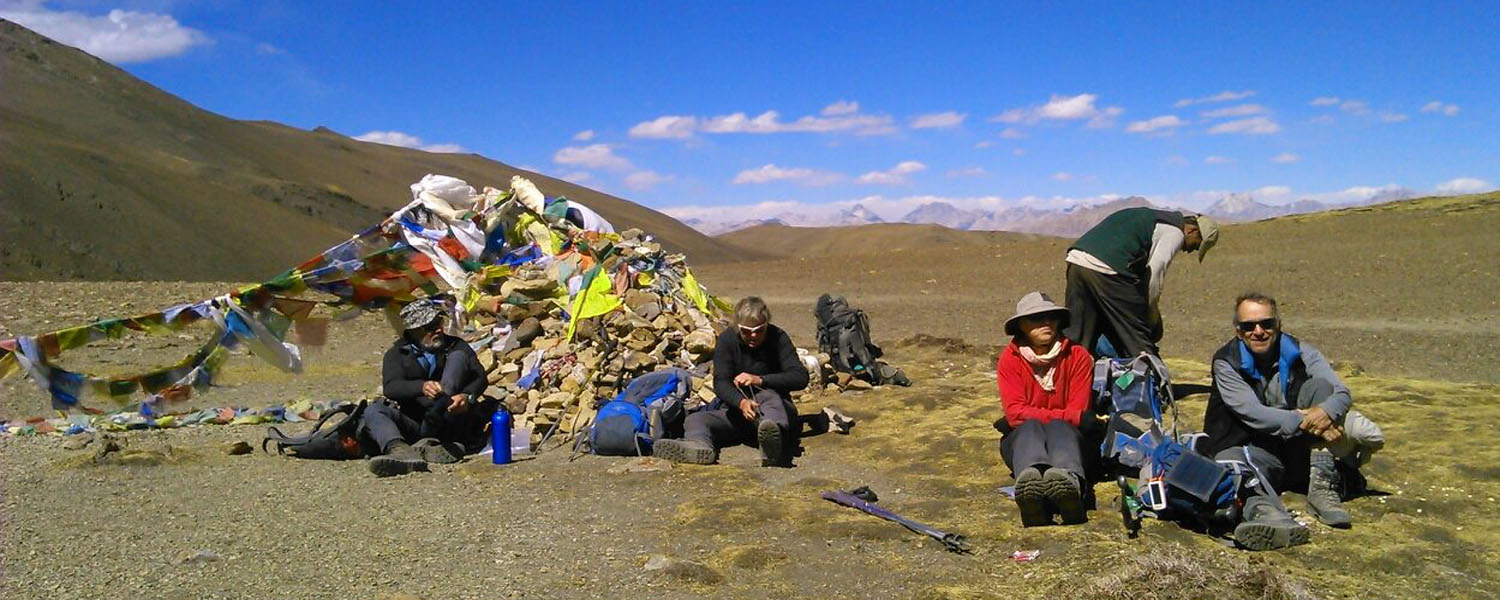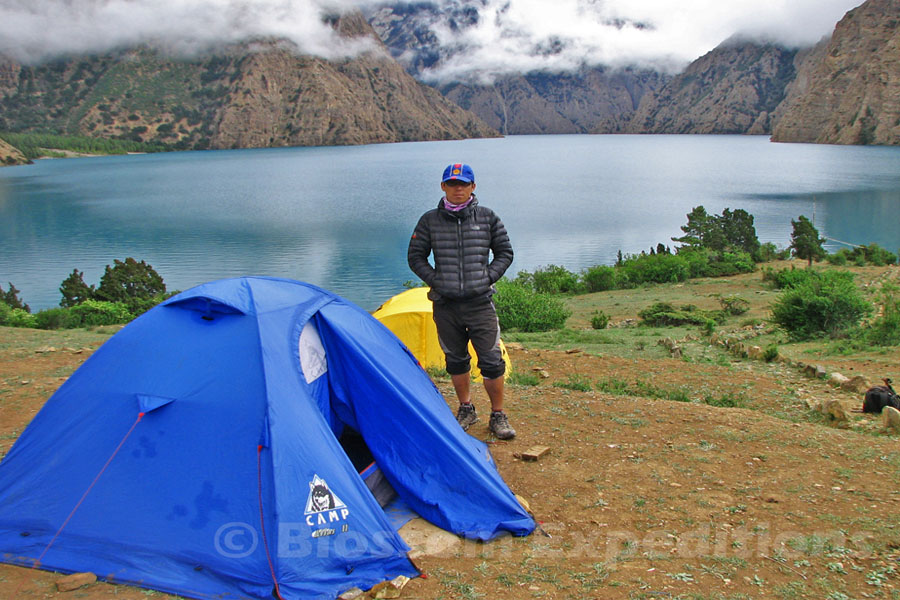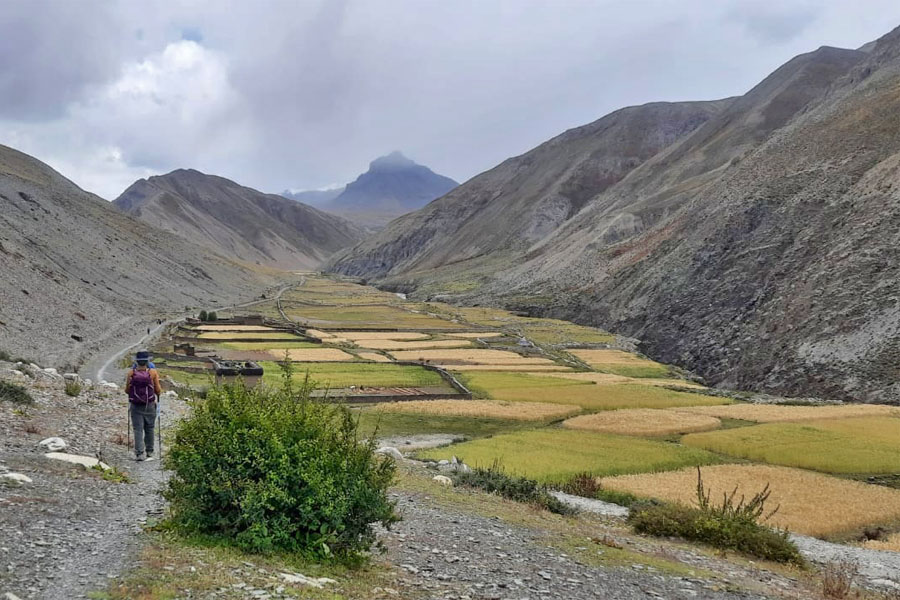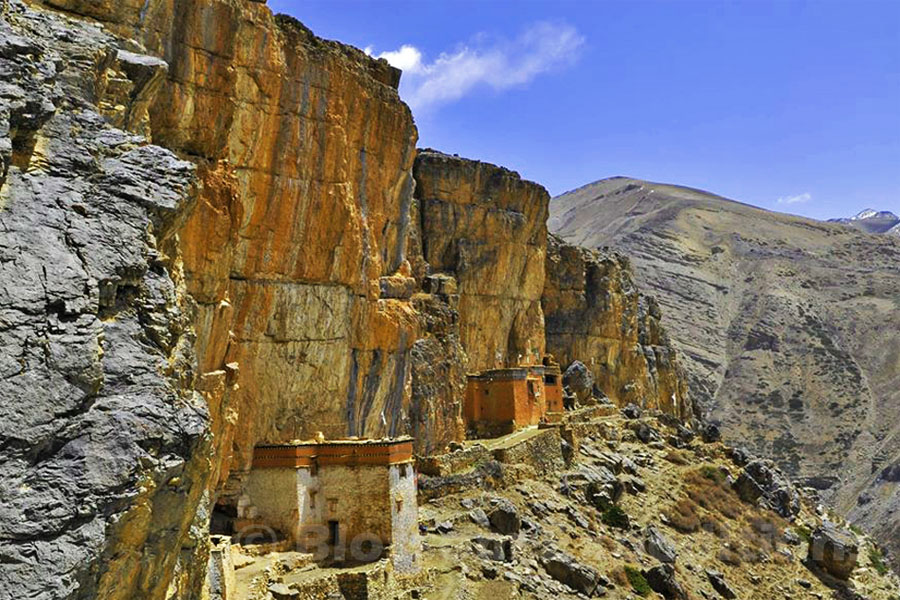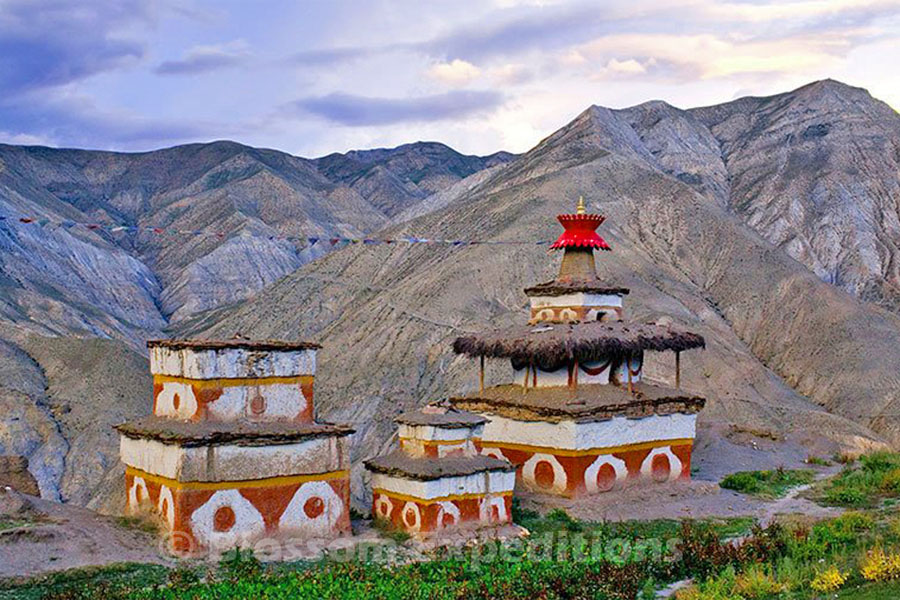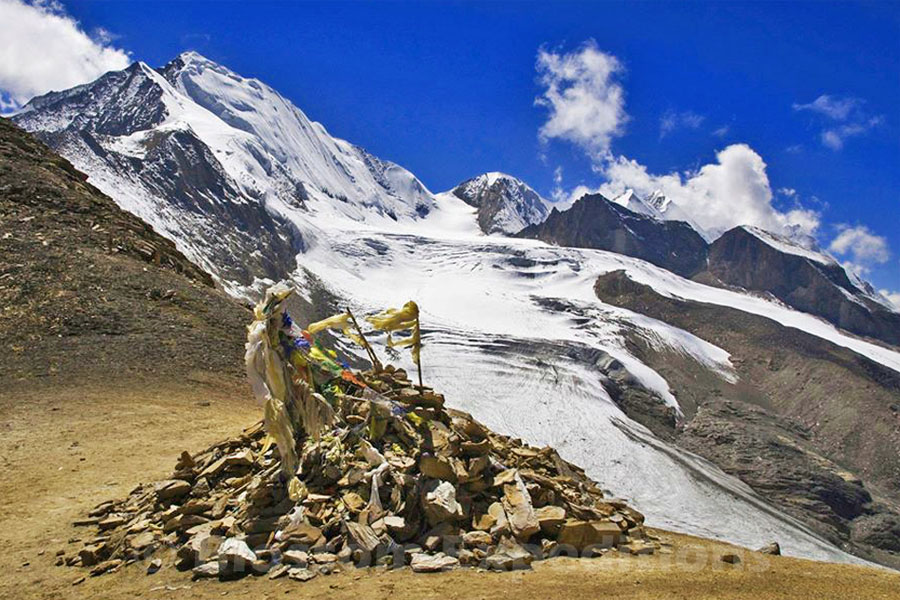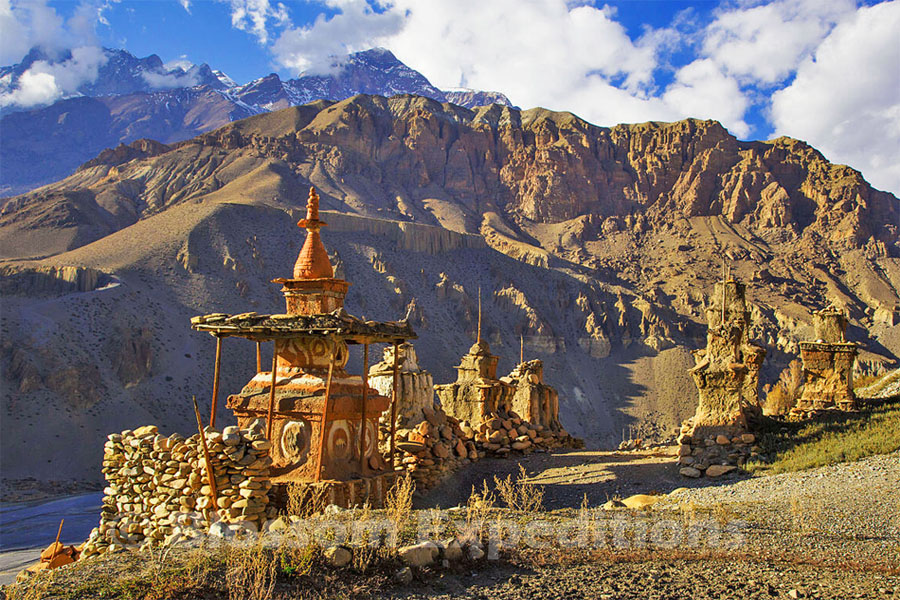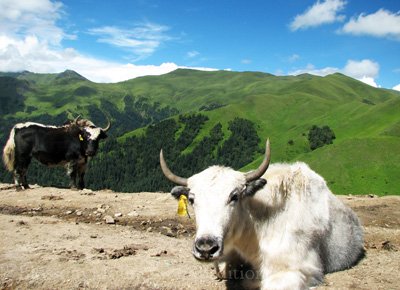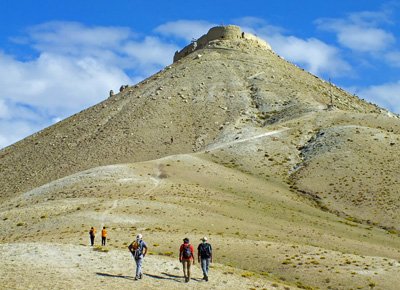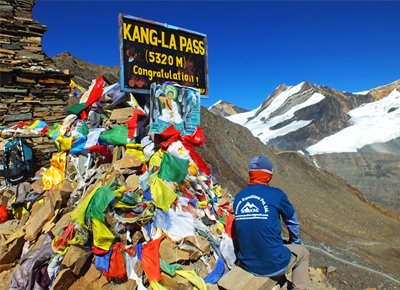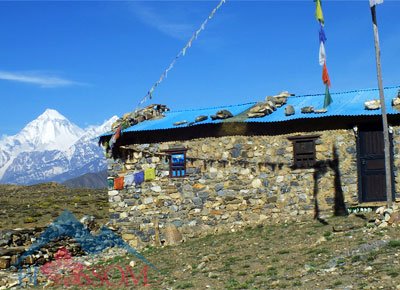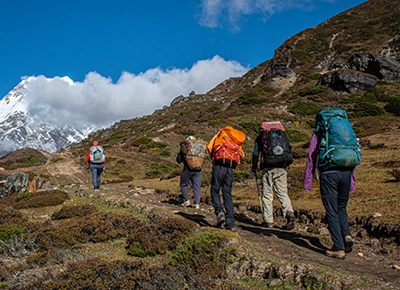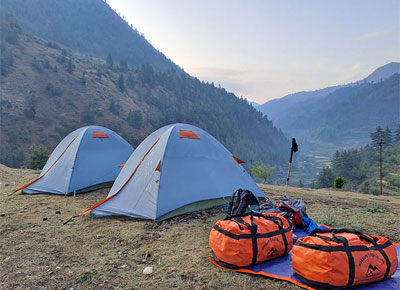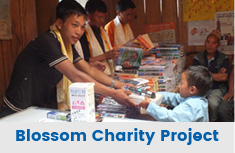Trip Facts
- Total Duration 29 days
- Trip Grade Moderate to Strenuous
- Max Altitude 5360m.
- Start From Juphal
- End From Juphal
- Accommodation Camping
- Best Season: Mid April to early November
Trip Highlights
- Living Antiques of Tibetan Buddhism and Bonism: The trek offers an immersive experience in ancient Tibetan Buddhist and Bon cultures. Travelers encounter monasteries, stupas, and rituals that are living remnants of these rich traditions.
- Natural Diverse Biodiversity: The region boasts a stunning variety of flora and fauna. Trek through diverse landscapes encompassing forests, valleys, and high-altitude terrain, home to rare wildlife such as the elusive snow leopard and blue sheep.
- Strenuous Trans-Himalayan High Passes and Spectacular Landscapes: The trek involves navigating challenging high passes in the Trans-Himalayan region, rewarding trekkers with breathtaking panoramas of snow-capped peaks, pristine lakes, and dramatic landscapes that leave an indelible impression.
- Unforgettable Trekking Experience: Trekking in Upper Dolpo is an unforgettable adventure, offering an immersive experience in remote wilderness, providing opportunities for self-reflection and appreciation for the raw beauty of nature.
- Incredible Hamlets with Mani walls, Kanies, and Chortens: Trekking through traditional villages unveils the cultural heritage of the region. Encounter ancient settlements adorned with intricately carved Mani walls, unique Kanis (gateways), and sacred Chortens, providing insights into the local customs and beliefs.
- Caravan of Yaks/Mules/Horses/Tzopas: Witness the traditional mode of transportation in the region as caravans of Yaks, mules, horses, and Tzopas (crossbreeds) transport goods across the rugged terrain, adding a picturesque element to the trekking experience.
Discover the Glory of Upper Dolpo’s Off-Beaten Trails
Trekking to the Upper Dolpo Region takes you to Nepal’s highest rural area in far-west Nepal, hidden amidst the mighty Dhaulagiri Mountain Ranges. Upper Dolpo, a pristine treasure of Nepal, remains largely untouched and unexplored, preserving its natural authenticity. This region, with its diverse terrain and rich Tibetan Buddhist culture, offers a raw and unique trekking experience in Far West Nepal.
The Allure of Upper Dolpo’s Isolated Trails
The isolated, off-the-beaten trails and captivating geography of the Upper Dolpo Region attract adventurous trekkers from around the globe. Foreigners were only allowed to trek in the Upper Dolpo in 1989. Since then, the area has been drawing huge numbers of travelers eager to explore this mystical region.
Experience the Majestic Beauty Between the Tibetan Plateau and the Dhaulagiri Range
Lying between the Tibetan plateau and the Dhaulagiri Himalayan Range, the Upper Dolpo Trek lets you discover some of Nepal’s most beautiful landscapes, lakes, and rivers. Upper Dolpo adventure begins from Kathmandu, followed by a flight to Jupal via Nepalgunj. The trekking trail winds through picturesque villages, stunning valleys, and spectacular scenery within Shey Phoksundo National Park.
Magnificent Phoksundo Lake and Ancient Monasteries
Witness the famous Phoksundo Lake, the Crystal Mountains, and some of the rare species of wildlife like the Snow Leopard. The trek also offers the opportunity to visit some of the oldest Bon/Buddhist monasteries in the region, enriching your cultural experience.
Best Seasons for Upper Dolpo Trekking
Spring (Late March to End of May): Spring is the best time for trekking in Upper Dolpo. The weather is pleasant, with clear skies and stable conditions. Snow Mountains are visible in all their glory, and varieties of wildflowers including Rhododendrons bloom in vibrant colors. However, early spring may still have snow, making some passes difficult to cross.
Summer/Monsoon (June to August): Upper Dolpo is in a rain shadow area, making it accessible during the monsoon season. The high passes are free of snow, the landscapes are lush, and the trails are clear.
Autumn (September to November): Autumn is the best season for trekking in Nepal, including Upper Dolpo. The clear and blue sky after the summer monsoons offers stunning views of nature and the Himalayas. You can also interact with locals during the fall harvest. However, snow may start to appear in November, so it is best to trek early or be prepared for colder conditions.
Winter (December to February): Winter is not recommended for trekking in the Upper Dolpo Region. The temperatures drop significantly, and the trails are often covered by snow, making passes impassable. The cold weather and harsh conditions make trekking difficult and unsafe.
Permit Requirements for Upper Dolpo Trekking
As Upper Dolpo is a restricted area, solo trekking is not permitted. To trek in Upper Dolpo, you need to obtain several permits, including the Lower Dolpo Restricted Area entry permit, Shey Phoksundo National Park permit, and the Upper Dolpo Restricted Area entry permit. The Upper Dolpo Trekking permit costs USD 500 per person (for the first 10 days) and beyond 10 days USD 50 per day per person. A Lower Dolpo Trekking permit costs USD 20 per person per week.
Join Blossom Expeditions for an Unforgettable Trek
Blossom Expeditions is dedicated to providing an enjoyable and safe trekking experience in Upper Dolpo. Our trained guides lead group treks, ensuring a memorable adventure in this remote and enchanting region of Nepal. For more details and to plan your Upper Dolpo trekking adventure, contact Blossom Expeditions today.
Trip Itinerary
| Days | Programs |
| 1 | Arrival in Kathmandu (1300m.) |
| 2 | Preparations day |
| 3 | Fly to Nepalgunj an hour |
| 4 | Fly to Jhuphal (2475m.) and trek to Kagani (2413m.) 45 mins flight, 3-4 hours Trek |
| 5 | Trek to Rainchi (2940m.) 5-6 hours |
| 6 | Trek to Phoksundo Lake (3,611m) 4-5 hours |
| 7 | Acclimatization and rest at Phoksundo Lake |
| 8 | Trek to Sallaghari (36300m.) 5-6 hours |
| 9 | Trek to Nangdo la (Kangla La Pass) high Camp (4717m.) 5-6 hours |
| 10 | Trek to Shay Gumpa (4160m.) via Nangdo La Pass (5360m.) 6-7 hours |
| 11 | Rest Day |
| 12 | Trek to Namduna (Namgung) Gaun (4430m) via Saldang La (5010m.) 6-7 hours |
| 13 | Trek to Saldang (3,620m.) 4-5 hours |
| 14 | Trek to YangjerGumba (3760m.) 4-5 hours |
| 15 | Trek to Shimengaon (3870m.) 5-6 hours |
| 16 | Trek to Tinjegaon (4150m.) 6-7 hours |
| 17 | Trek to Yak Kharka 6-7 hours |
| 18 | Trek to Tokyu (4240m.) via Choila Pass (5051m.) 7-8 hours |
| 19 | Trek to DhoTarap (3940m.) 4-5 hours |
| 20 | Rest Day |
| 22 | Trek to TarapKhola (Kamakharka) (3,800m) 6-7 hours |
| 23 | Trek to Khanigaon(3,150m.) 4-5 hours |
| 24 | Trek to Tarakot (2,537m.) 4-5 hours |
| 25 | Trek to Dunai (2,140m.) 5-6 hours |
| 26 | Trek to Juphal (2475m.) 2-3 hours |
| 27 | One Extra day we might needed |
| 28 | Fly to Nepalgunj and to Kathmandu |
| 29 | Free Day |
| 30 | Departure to Home |
Trip Highlights
- Living Antiques of Tibetan Buddhism and Bonism: The trek offers an immersive experience in ancient Tibetan Buddhist and Bon cultures. Travelers encounter monasteries, stupas, and rituals that are living remnants of these rich traditions.
- Natural Diverse Biodiversity: The region boasts a stunning variety of flora and fauna. Trek through diverse landscapes encompassing forests, valleys, and high-altitude terrain, home to rare wildlife such as the elusive snow leopard and blue sheep.
- Strenuous Trans-Himalayan High Passes and Spectacular Landscapes: The trek involves navigating challenging high passes in the Trans-Himalayan region, rewarding trekkers with breathtaking panoramas of snow-capped peaks, pristine lakes, and dramatic landscapes that leave an indelible impression.
- Unforgettable Trekking Experience: Trekking in Upper Dolpo is an unforgettable adventure, offering an immersive experience in remote wilderness, providing opportunities for self-reflection and appreciation for the raw beauty of nature.
- Incredible Hamlets with Mani walls, Kanies, and Chortens: Trekking through traditional villages unveils the cultural heritage of the region. Encounter ancient settlements adorned with intricately carved Mani walls, unique Kanis (gateways), and sacred Chortens, providing insights into the local customs and beliefs.
- Caravan of Yaks/Mules/Horses/Tzopas: Witness the traditional mode of transportation in the region as caravans of Yaks, mules, horses, and Tzopas (crossbreeds) transport goods across the rugged terrain, adding a picturesque element to the trekking experience.

